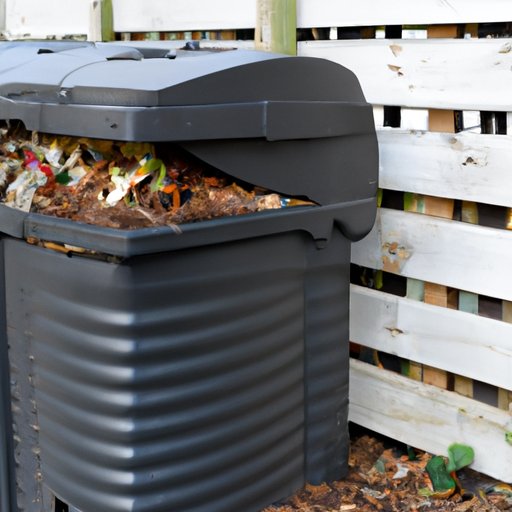Introduction
Composting is an easy way to reduce your household’s waste while also creating nutrient-rich soil for your garden. Compost is made up of organic matter such as leaves, grass clippings, and food scraps, which are broken down by bacteria and other microorganisms into a nutrient-dense fertilizer. Starting a compost bin is a simple process that requires minimal effort but yields great rewards.
Step-by-Step Instructions for Starting a Compost Bin
The first step to starting a compost bin is to choose the right bin for your needs. There are many different types of compost bins available, ranging from simple tumblers to more complex in-ground systems. Consider the size of your space, how much compost you need to create, and how often you plan to use it. Once you’ve chosen the right bin for your needs, it’s time to set it up.
Start by finding a suitable location for your bin. It should be in an area with good air circulation and access to water. Make sure there is enough space around the bin for air to circulate freely. When setting up the bin, make sure to follow the manufacturer’s instructions. Some bins will require additional supplies such as screws or brackets.
Once your bin is set up, it’s time to start adding materials. Start with a layer of brown materials such as dried leaves, straw, or sawdust. This will help to aerate the compost and provide carbon for the bacteria. Next, add a layer of green materials such as grass clippings, vegetable scraps, and fruit peels. Finally, add a thin layer of soil to introduce beneficial microorganisms into the mix.

Different Types of Compost Bins and Their Uses
There are several different types of compost bins available, each with its own advantages and disadvantages. Tumblers are one of the most popular options. They are easy to use and require minimal effort to turn the compost regularly. Worm composters are another popular option. They are ideal for small spaces and produce high-quality compost quickly. In-ground composters are best for larger spaces and allow for greater control over the composting process.

What Materials Can Be Composted
Organic kitchen waste such as vegetable scraps, eggshells, and coffee grounds can all be added to the compost bin. Yard waste such as leaves and grass clippings can also be added, as well as paper products such as shredded paper and newspaper. Avoid adding meat, dairy, or oily foods as these can attract pests or create unpleasant odors.
Tips for Troubleshooting Common Composting Issues
If you find that your compost is too wet, try adding more dry materials such as straw or sawdust. If your compost is too dry, try adding more green materials such as grass clippings or vegetable scraps. If your compost is producing unpleasant odors, try adding more brown materials such as dried leaves or sawdust. If you are still having issues, consult an expert for advice.
Conclusion
Starting a compost bin is an easy and rewarding way to reduce your household’s waste. With the right bin, materials, and maintenance, you can create nutrient-rich soil for your garden.
(Note: Is this article not meeting your expectations? Do you have knowledge or insights to share? Unlock new opportunities and expand your reach by joining our authors team. Click Registration to join us and share your expertise with our readers.)
